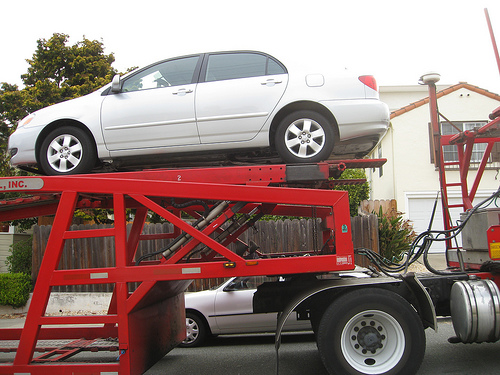
When shipping your automobile with a professional auto transport company, you should ensure that your car is adequately covered by both your and the auto shipping company’s insurance for any damage which might take place in transit. This damage can be cosmetic, such as scratches or dents which result from loading and unloading the car. Or, it can be internal, mechanical damage, which is impossible to see from just looking at the car. Regardless, auto transport insurance covers both you and the transporter if your vehicle is damaged during shipping, and all auto transporters are required to carry federally-regulated minimums.
Speaking to Your Provider About Car Shipping Insurance
First, call your own auto insurance company and ask them what their car shipping insurance policy is. Are there additional costs or a higher deductible that you need to be aware of when an auto transport company is shipping your car? Make sure you discuss these options with your insurance company, and, also, find out whether you need to formally notify them (and if so, how far in advance this should take place) either verbally or in writing about your plans to move your automobile. Keep in mind that moving your car to another state can have insurance implications that may impact your long-term insurance costs, and consider taking this opportunity to discuss this question with your insurance broker as well.
When you speak to your insurance provider, you may need to answer questions about the insurance policy held by the car shipper. Every auto transport company is required by law to have insurance covering the cars they transport, and you have a legal right to see their insurance certificate before you make a decision to ship your car with them. Don’t be shy about asking the representative from your auto transport company (or even the auto shipping companies you are considering) to show you this certificate. You can also ask them to provide something in writing which clearly states what the auto transport company’s insurance policy covers. Any reputable auto transport company will be glad to give you this information, and you should not receive any hassle or be made to feel uncomfortable about requesting it. Try to have this information ready for your auto insurance company should they have any questions.
Documenting Auto Transport Insurance Claims and Damage
Although auto transport insurance will cover damage that occurs to your vehicle during its journey, you must be able to prove that the damage took place in transit. The only effective tool you have is detailed photographs of your car and its condition. You will have an opportunity at both the beginning and end of your car’s journey to inspect the car with a representative of the company. Take advantage of this inspection and make sure you start your car’s engine in case of damage to the internal mechanisms of your car. Bring your original photographs and a camera to take photos when you pick your car up to document any potential damage. Always detail your vehicle’s condition on the bill of lading upon pick-up and delivery – this is your legal document. If damage is not listed on the bill of lading, you may have a very hard time proving in a court case that the transporter was at fault.
